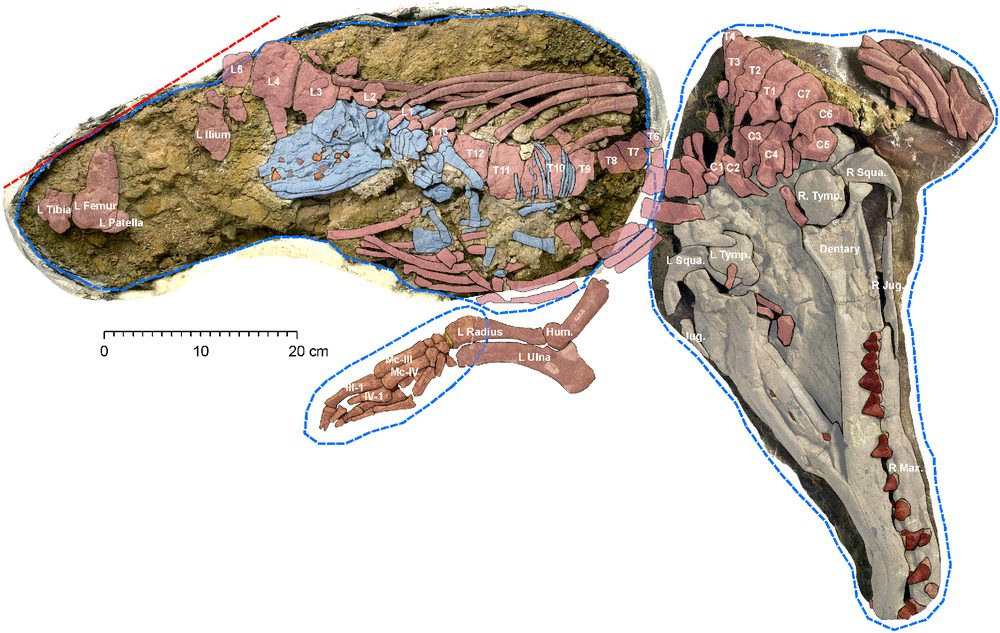 Giraffe (Giraffa camelopardalis) at the the Cincinnati ZooOK, let’s face it giraffes (Giraffa camelopardalis) are just plain cool. Tall and lanky Manute Bols of the animal world covered in spots. In addition to being high on the list of must-see animals on an African safari, giraffes have served as poster children for evolution. Long before Darwin, that other evolutionist, the French naturalist Jean-Baptiste Lamarck, speculated that the long-necked giraffe was descended from shorter-necked ancestors. According to Lamarck, all that stretching to get to juicy, tree-top leaves changed their necks in ways that they then passed on to their offspring.
Giraffe (Giraffa camelopardalis) at the the Cincinnati ZooOK, let’s face it giraffes (Giraffa camelopardalis) are just plain cool. Tall and lanky Manute Bols of the animal world covered in spots. In addition to being high on the list of must-see animals on an African safari, giraffes have served as poster children for evolution. Long before Darwin, that other evolutionist, the French naturalist Jean-Baptiste Lamarck, speculated that the long-necked giraffe was descended from shorter-necked ancestors. According to Lamarck, all that stretching to get to juicy, tree-top leaves changed their necks in ways that they then passed on to their offspring.“The giraffe lives in dry, desert places, without herbage, so that it is obliged to browse on the leaves of trees, and is continually forced to reach up to them. It results from this habit, continued for a long time in all the individuals of its species, that its fore limbs have become so elongated that the giraffe, without raising itself erect on its hind legs, raises its head and reaches six meters high (almost twenty feet).” Lamarck on giraffes taken from Alpheus Spring Packard. 1901. Lamarck, the founder of evolution: his life and work with translations of his writings on organic evolution. Longmans, Green and Co.
Along comes Darwin who bought into the idea that living things can change over time but didn’t buy into Lamarck’s mechanism for evolution. For Darwin the evolution of the giraffe’s elongated neck was due to selection. From the standpoint of Darwin’s natural selection individuals in ancestral giraffe populations varied in some intrinsic and immutable way, at least immutable in the lifetime of an individual. These ancestral giraffes not only varied in leg and neck length but they also varied in their propensity to survive and contribute offspring to the population. Variation in survival and reproduction was in turn correlated to some variation in physical traits. Proto-giraffes that survived and successfully bred (one usually is necessary for the other) then passed on their intrinsic “legginess” and “neckiness” to their progeny and the population changed over time, generation-by-generation getting a little taller and necks a little longer as selection sieved through that variation in the population that can be passed from parent to offspring. It’s remarkable that Darwin came up with natural selection while knowing next to nothing about exactly how traits were passed from parent to offspring. It wasn’t until nearly a century after Darwin that natural selection was reconciled with the viable model of biological inheritance we call genetics.
But where are we then left with giraffes? Clearly neck and leg length evolved and likely by some sort of Darwinian selection in giraffes. Giraffes’ closest living relatives, the equally cool, West-African forest dwellers, the Okapi (Okapia johnstoni), have comparatively short necks and the fossil record reveals many giraffes with short necks. Modern giraffes are nested in a family tree that therefore points to short-necked ancestors. But, if selection plays a role then what is the agent of that selection? Darwin posed two models of selection; good-ole-fashioned natural selection where predators, the physical environment, competition for food, parasites or some other agent act on survival and reproduction and sexual selection where the agent of selection lies in a species’ own gene pool. In sexual selection the variance in individuals contribution to the population stems from competition for mates, either competition with members of your own sex to access the opposite sex or competition imposed by a choosy opposite sex. These forms of selection, natural and sexual, are basically the same, both involve filtering through available variation to change the population, but in sexual selection the agent of selection lies specifically in competition for mates. Competition for mates can lead some some crazy characteristics, everything from a moose’s antlers to the gaudy flowers of orchids, and maybe giraffes necks?

